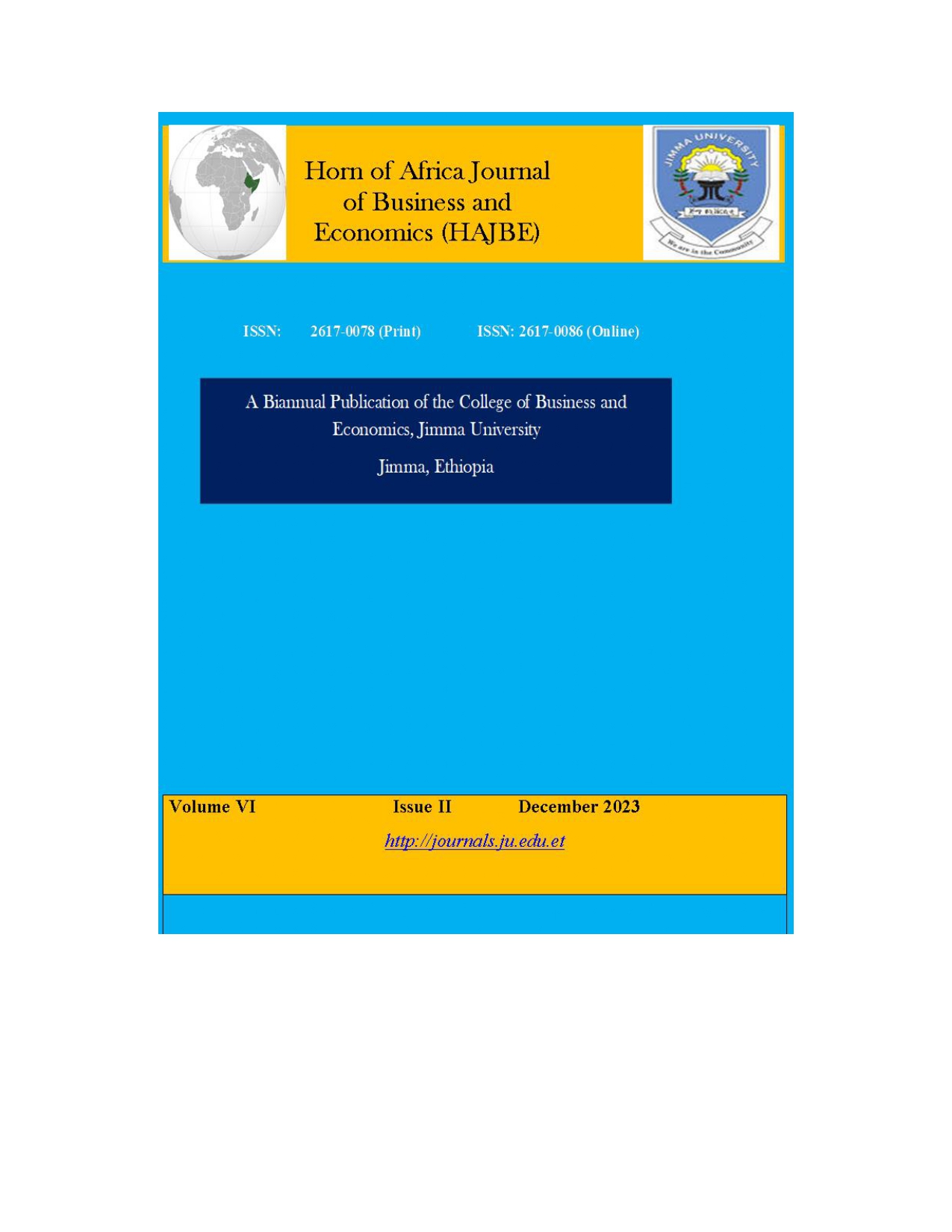Impact of Government Education Expenditure on Economic Growth in Ethiopia ARDL Approach to Co-integration
Main Article Content
Abstract
A wide range of theoretical and empirical research has recognized the importance of investment on human capital as an engine for economic growth and development. No country has achieved long-term economic expansion without making large investments in human capital. As a result, over the past decades education has been given high priority in Ethiopia’s development strategy. However, despite the high priority given to the education sector and the increase in government education expenditure as a result, the country is experiencing low literacy rate which accounts 52% in 2021 indicating a very low performance as compared to developed countries and even Sub Saharan African countries average literacy rate which accounts 67.27% in 2021. Hence a study on how this government education expenditure is contributing to the economic performance of the country is important. The main objective of this study is to investigate the impact of government education expenditure on economic growth in Ethiopia. The study used explanatory research design and quantitative research approach. Secondary data from Ethiopian Ministry of Education, Ethiopian Ministry of Finance, World Development Indicators, and National Bank of Ethiopia covering the years from 1988 to 2022 G.C were used as data source. To study this relationship between dependent and independent variables Autoregressive Distributed Lag (ARDL) bounds test approach to co- integration was used. The findings of the study revealed a positive and statistically significant relationship between government education expenditure and economic growth in Ethiopia under the study period both in the long run and short run. Moreover, the control variables used in this study; export, official exchange rate and labor force participation rate were found to be statistically significant. However, the results related to gross fixed capital formation rate was found statistically insignificant for the selected lag length. This may be due to the sensitivity of tine series data to sample size and lag lengths or other reasons which requires further study. To check the robustness of the long run ARDL model, the Fully Modified Least Squares (FMOLS) and Canonical Co-integrating Regression (CCR) tests were made and the results of the two methods were consistent with the long run ARDL model for the variables government education expenditure, labor force participation rate, export and exchange rate in their log form. Based on the findings of this study, the researcher recommends that the government of Ethiopia should continue increasing the education expenditure in order to address the country’s increasing population growth but should also ensure that education expenditure is efficiently utilized to enhance the existing low literacy rate and the level of its contribution to the economic performance of the country through proper monitoring and evaluation.

